|
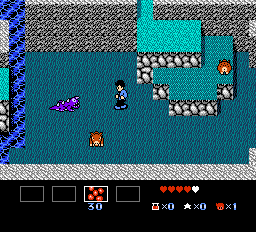 ... ...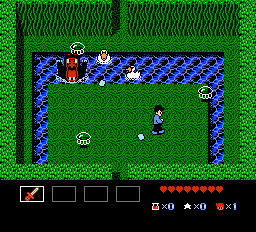
Zoda's Revenge: StarTropics II seems to take place in a bizarre alternate universe in which things normally found only in video games exist in the real world. Remember that part of the idea of StarTropics, this game's predecessor, was that it was supposed to have a more modern, realistic setting than the standard fantasy and futuristic environments common to other 8-bit adventure games. Zoda's Revenge is like StarTropics meets Bill & Ted's Excellent Adventure, and along with the standard "celebrity meet-ups in time" plot, we also get a few not-very-subtle game crossovers as well.
Mike Jones, the original hero of StarTropics, is back in Seattle with his archaeologist uncle, Dr. Jones, where they unlock the secret time-traveling powers of a book called the Oxford Wonder World. The alien spell (which just happens to be "Papa Oom Mow Mow" from the Trashmen's 1963 song "Surfin' Bird"), immediately sends Mike tumbling through time on a quest to find the mystical Tetrads. (Yes, Tetrads, as in the different block shapes found in Tetris). This sets up the game's chapter system, as each chapter will take place in a different time period, which some StarTropics fans have found disappointing, but in my humble opinion, was a better idea than a retread of island, island, island, island, island...
But no matter where Mike goes, he immediately finds himself right back in the same overhead view, Zelda-style action scenes that dominated his first outing, and it is in these scenes that we can see the true ups and downs of the game. If you've played StarTropics the first thing you'll notice is that Mike's play control has improved quite a bit. Although he's still a bit "sticky", he's not as stiff as he was before, and he now has the ability to walk and leap diagonally, which eliminates unnecessary frustration while allowing for some tricky jump sequences.
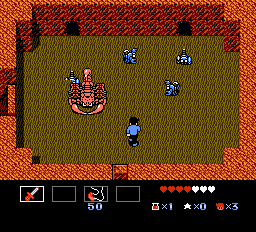 ... ...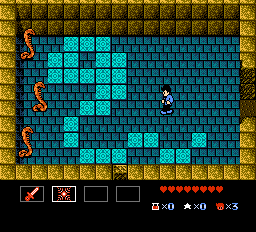
The action stages of Zoda's Revenge use the same room-by-room structure of the original StarTropics and The Legend of Zelda. Instead of scrolling continuously, you enter a room and you're stuck there until you find a way out. Usually a puzzle must be solved, or a group of enemies destroyed before you can safely exit. These rooms can often be deceptively difficult to conquer, but the variety of puzzles isn't as staggering as the number of enemies; most are of the "hop on block to find switch" variety.
However, there are a few more logic puzzles in Zoda's Revenge than I remember there being in StarTropics. StarTropics had a couple of thinking moments in its overworld (such as when you had to find the correct tombstone), but all of its dungeon puzzles involved finding and hitting switches. Zoda's Revenge has a maze that you navigate by following a specific pattern of shapes, a dungeon in which a flute must be played in a strategic location to open the way forward, and several rooms where you have to knock bouncing balls into a hole (but of course, it's easier said than done).
Unfortunately, the logic puzzle aspect wasn't used to the extent that I would've hoped, but StarTropics is more about action, and Zoda's Revenge delivers that in lopsided quantities. The first two chapters, for example, are complete throwaways (it's possible to defeat the first boss before it even has a chance to attack). While the pace does start to pick up a bit in Chapter 3, I don't remember getting through the first few levels of StarTropics in such a short amount of time.
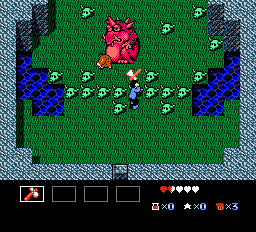 ... ...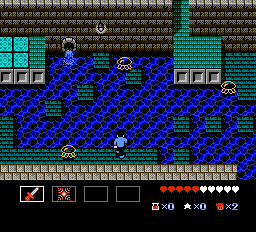
Among the tougher action sequences are areas that require you to leap across moving platforms that float precariously over bottomless pits. Sometimes, you'll even have to leap over spiked poles as you're riding them. Other jumps require you to tweak Mike's control in mid-air to either guide him to a safe landing spot, or to keep from falling endlessly through multiple floors. There is one particularly dazzling castle that is a labyrinth of walls and hidden pits that take you to a randomly-selected action scene. Completing the scene will allow you to continue walking about the castle, but sometimes you have to exit the "right" way to get yourself on the correct path.
Enemies generally don't provide as much of a challenge, but there are some that can fill the room with explosions or bouncing slimes that are difficult to both hit and avoid. There is even a kind that mimics the Darknut's defensive capabilities from Legend of Zelda, and it can fire multiple shots in eight directions.
The bosses are a mixed lot, but ignoring the first one, they are creative, and do provide a good workout, being right on par with the bosses of StarTropics. My personal favorite is the dragon, who has a tough shooting pattern to avoid, and must be beaten quickly because the room is slowly filling with spikes. The Pazuzu boss of Transylvania (which seems a possible homage to Castlevania III) is another one that deals in multiple, tricky patterns, as it spews bats, bullets, and feathers that propel you into a bed of spikes. There is even a rather frantic fight against a horseback knight in which you're circling the room on a speedy conveyor belt and it's difficult to both get a hit in on him and avoid his relentless raining spears.
The final level is sure to delight fans of the original StarTropics as it's set up almost exactly like that game's first level. (It even includes a new version of the same music.) I won't spoil the surprise of the boss for this area, but I will mention that it's a bit disappointing that this stage concludea with a boss rehash. Boss rehashes usually indicate a bankruptcy of ideas, but at least some of the cheap tactics you could use to insta-kill some of the bosses before (such as Yum-Yum and the Miner) cannot be used here. The final boss of Zoda's Revenge is not as exciting and difficult as the final boss of StarTropics, mainly because of the number of potions you can accumulate before meeting him.
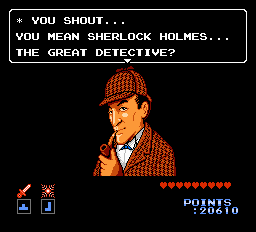 ... ...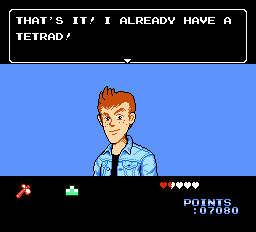
The game's quick pacing also has an adverse effect on the story; very little is done to develop it. Mike hops to an era of history, meets someone famous, then moves onto the next chapter. Nothing Mike does has any effect on any possible future event, except for one really ridiculous scene where he convinces Leonardo da Vinci to change the Mona Lisa's hair style. The game doesn't take time to breathe in its worlds and make them seem alive. It uses them only for backdrops and to provide us with the countless cameos. There is, for example, almost no reason for the appearance of Sherlock Holmes (even ignoring the fact that he's a fictitious character of Sir Arthur Conan Doyle's creation). Sure, he tells you to go to the museum, but anyone could've done that.
Zoda, himself, is yet another great game villain who has been reduced to leaping out of shadows and laughing maniacally in a sequel. This happened to Foster in Ninja Gaiden III, who was unceremoniously killed after he did his share of leaping and laughing. Here Zoda is unceremoniously revived in three forms (Zoda-X, -Y, and -Z), and exactly how he was revived is never explained.
I also feel the Tetris crossover is laid on much too thick. The story doesn't even try to make any pretense about it, the character who fits the Tetrads together admits the reason he can do so is because he's good at Tetris. And not to mention a key character's more-than-casual resemblance to Tetris creator Alexey Pazhitnov. This hoaky connection between Tetris and the Argonians somewhat demystifies them.
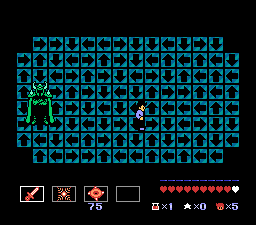 ... ...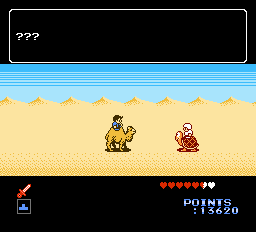
So what we have in Zoda's Revenge is a StarTropics sequel that has fluid controls and fun puzzles, but is not quite up to par in terms of story, atmosphere, and possibly even difficulty with its predecessor. Although it isn't the quintessential NES game that could've made the system go out with a bang, it's a very well-done action platformer, and it's a shame the StarTropics series hasn't seen an installment since.
Score: 3.5/5
|